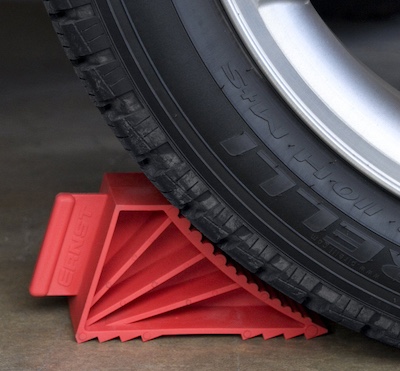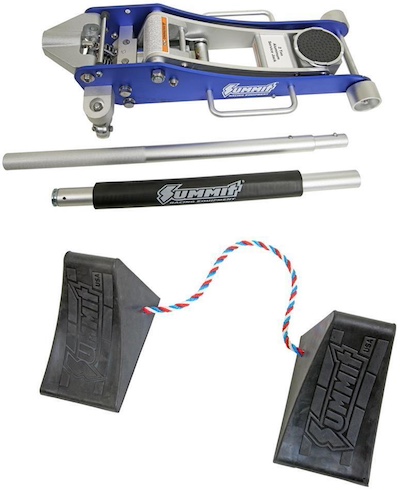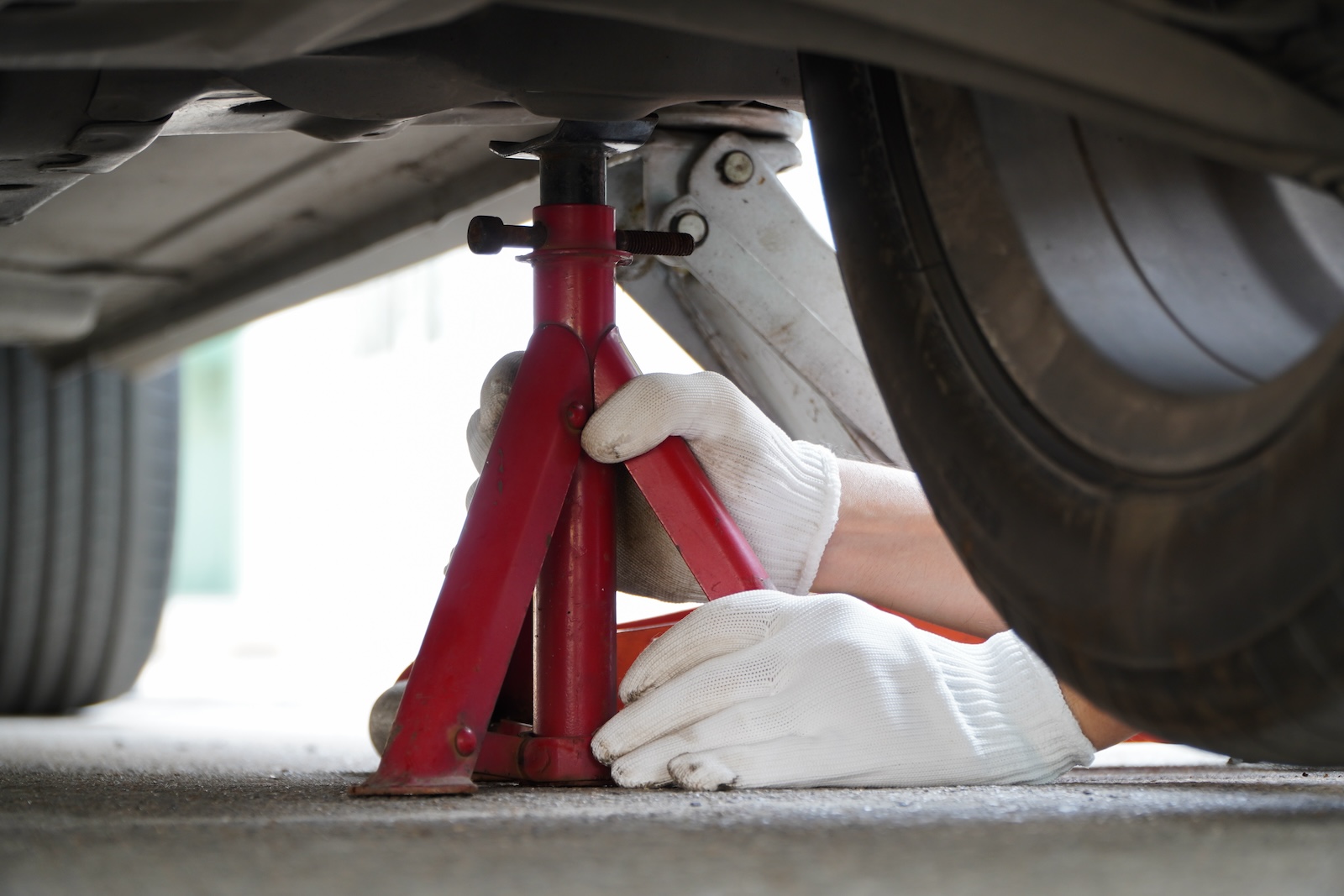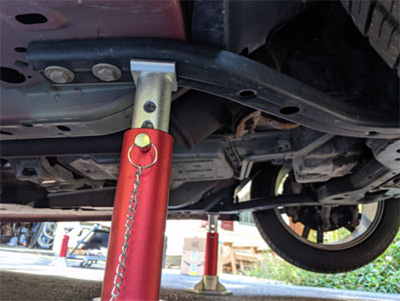Fortunately, properly jacking up a car doesn’t require much equipment. The biggest thing to remember is to never put yourself in a position where the vehicle can slip and crush you. Safely lifting and supporting a vehicle is one of the most fundamental jobs in DIY repair, so follow these simple steps.
Step 1: Gather Supplies
You’ll need the following items to jack up a car safely:
Floor jack – The emergency jack in the trunk of your vehicle can work in a pinch, but a hydraulic floor jack rated for at least half the car’s weight is easier and faster to use.
A pair of jack stands – Sturdy jack stands support the car’s weight after it’s lifted into position. NEVER get under a vehicle supported by a jack, and NEVER use something like a cinder block to support a car when it’s lifted.
Wheel chock – When lifting a car from one side or one end, it will tilt out of level, even if you’re working on a flat surface. The vehicle might roll when you lift it. A wheel chock keeps the wheel that remains on the ground in place while you lift the opposite side.
Step 2: Choose a Flat, Stable Work Surface
Lifting a car makes it unstable. Minimize your risk by choosing a flat, stable work area, such as a garage floor or a concrete driveway. Dirt, gravel, grass, or even asphalt driveways tend to shift and sink slightly under the concentrated weight of a jack and jack stands. That shift could cause the car to drop.
Many driveways are built on a slope, which creates more instability and increases risk. You’re lifting a couple of tons of metal over your head. It pays to make the process as safe and stable as possible.
Shop now for jack standsStep 3: Locate Your Jacking Point
For most vehicles, specified jacking points are listed in the owner’s or shop manual. They are often behind the front wheels and in front of the rear wheels on a pinch weld at the rocker panel. The pinch weld is a reinforced area explicitly meant for lifting the car, and sometimes, it has a notch cut out for the purpose. Some cars—and many trucks—have frame rails running under the body that provide safe and stable jacking points.
Step 4: Chock a Wheel, Set Parking Brake, Put in Park

First, chock a wheel that remains on the ground. Chocking means to place a wood, plastic, or steel wedge in front of the wheels to prevent its movement.
Then, set the parking brake to lock the rear wheel and prevent it from rolling. Finally, put an automatic transmission in Park or a manual transmission in a low gear. This gives additional rolling resistance and minimizes the chance of rollaway.
Step 5: Jack the Car
Now that you’ve located the jack point and prevented the car from rolling, move the jack into place. Gradually pump the handle to lift the cradle of the jack to the jacking point. Once the cradle of the jack touches the car, you’ll need to exert more effort with each pump to lift the vehicle.
Once you start lifting, you might notice that the car raises, but the wheels remain on the ground. That’s normal because the car’s suspension is unloading.
Be deliberate as you lift the car. Look for points where the vehicle could shift or roll away. Don’t be afraid to stop, lower the vehicle, and choose a different jack point if it might be safer.
Shop now for hydraulic floor jacksStep 6: Place Jack Stands
After you lifted the car enough to access the places you need to reach, place the jack stands to support the vehicle. NEVER get underneath a car supported only by a jack. The hydraulic cylinder within the jack is not meant to hold the weight of a vehicle for long. The jack can start to lower gradually and potentially pin you underneath.
Safely place the jack stands on solid parts of the chassis or body. Place them so that your work won’t rock the car off the jack stands. Good jack stand points include the jacking points on the pinch welds or frame rails. The rear axle tube is often a good jack stand location for vehicles with solid rear axles. Of course, it depends on the type of work you’re doing. Don’t place a jack stand underneath a part you’ll need to remove.
After you place the jack stands safely, stop and get out from under the car. Stand up and push on the car from a few different angles. Make sure that the car cannot fall off of the jack stands.
Remember that the work you’re doing under the car might require you to pull hard on a wrench, and those forces could rock the vehicle. Making the jack stands as stable as possible will keep you safe as you work.
Shop now for jack standsStep 7: Complete the Job, Then Lower the Car Safely
When you finish the job, lower the car back to the ground roughly in the reverse order of lifting it. Make sure any wheels you’ve removed have been replaced with the lug nuts torqued, and place the jack in a proper jacking location. Check the area for loose tools or discarded car parts. Lift the car enough to raise it from the jack stands, then remove the jack stands.
Carefully lower the jack, returning the car safely back on the ground.
Shop now for hydraulic floor jacks








